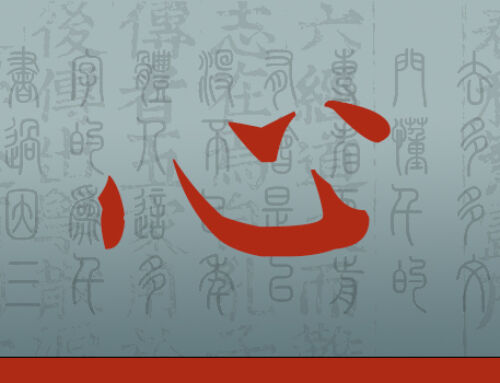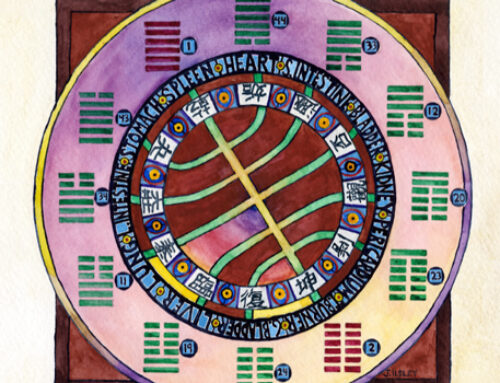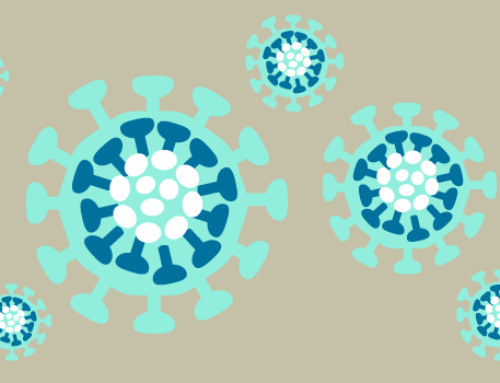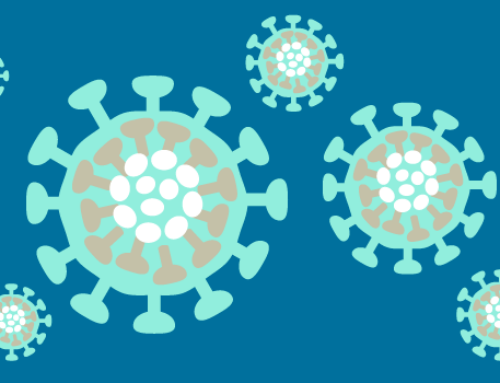By Wang Yongyan, Wang Xuefeng, Ma Rong
Chinese Archives for Traditional Chinese Medicine
(Zhonghua Zhongyiyao Xuekan)
Synthesized and Translated by Heiner Fruehauf
National University of Natural Medicine,
College of Classical Chinese Medicine
MARCH 3, 2020
After observing an idiopathic outbreak of viral pneumonia in December 2019, which was later confirmed as the novel COVID-19 infection, increased numbers of infected children have come to the attention of relevant medical agencies in China.
The following is a synthesis of experiences in diagnosing and treating infected children all over China with Chinese medicine modalities, prepared as a co-production by the National Center for the Clinical Research of Respiratory Diseases, the National Center for Pediatric Medicine, the Respiratory Disease Committee of the Pediatric Department of the Chinese Association for Chinese Medicine, the Committee for Pediatric Health and Herbal Research at the Chinese Academy for Chinese Medicine Pharmacology, and experts at other government agencies. Initial recommendations put forth in this article were first published by Wang Yongyan from the Chinese Academy of Sciences on January 29, 2020, and later supplemented by the experiences of the following institutions, researchers and health care providers on the front lines of the epidemic: The National Center for Pediatric Medicine’s Clinical Experts on the Front Line, Dr. Yu Jian (Director of the Pediatrics Department at the Affiliated Hospital of Fudan University in Shanghai), Dr. Tang Jianqiao (Director of Wuhan City Pediatric Hospital), Dr. Yan Suqi and Dr. Xiong Xiaoli (Chief Physicians at Wuhan City Pediatric Hospital), Dr. Xiang Xixiong (Director of Hubei Province Chinese Medicine Hospital), Dr. Xu Huifu (Director of Wuhan City Hospital for Integrative Medicine), Dr. Deng Jianzhu (Chief Physician at Guangzhou City Hospital of Gynecology and Pediatrics), Dr. Han Xue (Director of Henan Province Pediatric Hospital), Prof. Wang Shouchuan (Accomplished Chinese Medicine Pediatrics Expert), Prof. Jia Liujin (Accomplished Chinese Medicine Expert), Prof. Ma Rong (Affiliated Teaching Hospital No. 1 at Tianjin University of Traditional Chinese Medicine and Pharmacology), Prof. Xiong Lei (Yunnan University of Traditional Chinese Medicine and Pharmacology), Prof. Wang Youpeng (Affiliated Teaching Hospital No. 2 at Heilongjiang Province University of Traditional Chinese Medicine and Pharmacology), and other experts in similar positions.
All of the consulted experts agreed that Chinese medicine therapy works best when differential diagnosis is used and when the treatment is approached in stages. Moreover, the importance of taking regional and climate characteristics into account was emphasized. Furthermore, original therapeutic insights were enhanced as understanding of the disease deepened due to a dramatic increase in patient numbers. In general, physicians on the front line agreed that COVID-19 should be categorized as an epidemic pestilence (wenyi) in the traditional Chinese medicine system of disease categorization.
During the acute stage, the first order of business is to differentiate whether patients are afflicted by a light or severe case of the disorder. Typical symptoms in light cases are fever, cough, sneezing, nausea, diarrhea. In contrast, typical symptoms in severe cases are unrelenting fever, or fever with alternating hot-cold sensations, cough with little phlegm, or expectoration of yellow phlegm, or choppy breathing and asthmatic wheezing, abdominal bloating and constipation, or other signs of Epidemic Toxicity Blocking the Lung Syndrome (yidu bifei zheng). Critical patients tend to exhibit the following symptoms: difficulty breathing, loss of consciousness, restlessness, severe sweating accompanied by cold extremities, a dark purple tongue color, a thick and occasionally dry tongue coating, a pulse that is big, floating and without root, bluish-purplish index finger veins that extend all the way to the Gate of Life position (mingguan), altogether indicating a life-threatening situation of the Internal Blockage and External Dissipation (neibi waituo) variety.
The next stage of differential diagnosis should focus on the location of the disease and the nature of the pathogenic affliction. If the disease is still at the surface, typical symptoms include fever, sore throat, cough, runny nose, etc. If the Middle Burner is already involved, symptoms typically include nausea, vomiting, fatigue, abdominal pain, diarrhea, etc. If damp heat conditions dominate, the following symptoms are typical: unrelenting fever, cough, headache, sore and painful connective tissue, greatly diminished mental and physical energy, potential diarrhea, pale red tongue color, greasy yellowish tongue coating, etc. For cold damp conditions, the following symptoms are typical: headache without sweating, soreness of the extremities and major joints, white and slightly sticky tongue coating.
During the recovery stage the degree of excess and deficiency should be differentiated. Patients with a Righteous Qi (zhengqi) deficiency tend to exhibit typical qi deficiency symptoms like occasional coughing, languor and fatigue, spontaneous sweating, poor appetite, bowel movements that tend to be loose yet difficult to pass. Patients with dual qi and yin deficiency symptoms tend to exhibit symptoms of low grade fever, languor and fatigue, spontaneous sweating, night sweats, bowel movements that tend to be loose yet scant in volume, pale red tongue color with little coating, etc. Patients with Deficiency of Righteous Qi and Ingrained Pathogenic Presence (zhengxu xielian) are often free of clinical symptoms, but fluid samples taken from their nose, throat or bowel movements still test positive for the nucleic acid of the COVID-19 virus.
The Ming dynasty scholar-physician Wu Youke, in his influential treatise Wenyi lun (Discourse on Fever Epidemics), commented that “the reason why we know that we are dealing with an epidemic disease is that patients during the relevant time period all exhibit the same symptoms and the same pulse pattern, and all respond to the same medicines… There appears to be only one disease that responds to the same remedy, and therefore we do not need to bother with the regular business of differentiating between Emperor, Minister, Assistant and Servant (jun chen zuo shi) gradations within a formula, nor do we need to painstakingly modify the prescription with other ingredients.” In the highly variable environment of clinical practice, however, Chinese medicine treatment approaches will undoubtedly benefit from the process of differentiating stages of the disease as well as individual symptom characteristics. During the acute phase of the disease the prescription of anti-pathogenic herbs is paramount; together with the modalities of Western medicine these are effective in achieving symptom relief as well as preventing further development to a more critical state of pathology. During the recovery period combining tonic herbs with medicinals that address residual pathogens can speed up recovery time.
![]()
I. Acute Stage
1) Light Symptom Type
Epidemic Toxins Attacking the Surface Syndrome (yidu xibiao zheng)
- Typical symptoms: fever or no fever, dry cough, mild sore throat or dry throat, slight decrease in energy, possibly accompanied by nausea or vomiting, diarrhea, red or pale red tongue color, thin white (or slightly yellow) and slightly greasy tongue coating, floating pulse.
- Etiology: Seasonal pathogens invading the surface in the form of epidemic toxicity (yidu shixie fanbiao) causing surface layer disharmony (weibiao shihe).
- Recommended approach: Release the surface and out-thrust pathogens (jiebiao touxie).
- Recommended traditional prescriptions: Yin Qiao San (Lonicera and Forsythia Powder) plus Buhuanjin Zhengqi San (Rectify the Qi Powder Worth More than Gold) modified; Jing Fang Baidu San (Schizonopeta and Ledebourellia Powder to Overcome Pathogenic Influences) modified; Xinjia Xiang Ru Yin (Newly-Augmented Elsholtzia Tea) modified.
- Example of herbal prescription: Zisuye (Perilla leaf) 3-6g, Jinyinhua (Lonicera) 6-9g, Lianqiao (Forsythia) 6-9g, Niubangzi (Arctium) 3-6g, Cangzhu (Atractylodes, red) 3-6g, Chenpi (Citrus) 6-9g, (Jiang) Banxia (Pinellia; ginger cured) 6-9g, Houpo (Magnolia bark) 3-6g, Huoxiang (Agastache) 6-9g, Gancao (Licorice) 3-6g.
Epidemic Pathogens Impeding the Middle Burner Syndrome (yi kun zhongjiao zheng)
- Typical symptoms: fever, headache, decrease of movements, decrease of appetite, nausea, vomiting, diarrhea, bloating, potentially accompanied by cough, or stifling sensation in chest in older children, red tongue color, yellow and greasy tongue coating, soggy pulse.
- Etiology: Epidemic damp pathogens obstructing the Middle Burner (shiyi zhi xie zu’e zhongjiao) causing dysregulation of the body’s up-down dynamics (qiji shengjiang shisi).
- Recommended approach: Transform turbidity with aromatic medicinals (fangxiang huazhuo), open up qi dynamics (xuantong qiji).
- Recommended traditional prescriptions: Xiang Su San (Cyperus and Perilla Leaf Powder) modified; Lian Po Yin (Coptis and Magnolia Bark Tea) modified; Huo Po Xia Ling Tang (Agastache, Magnolia Bark, Pinellia and Poria Decoction) modified.
- Example of herbal prescription: Huoxiang (Agastache) 6-9g, Zisuye (Perilla leaf) 6-9g, Houpo (Magnolia bark) 3-6g, Chenpi (Citrus) 6-9g, (Maichao) Zhike (Aurantium; wheat fried) 3-6g, Fuling (Poria) 6-9g, (Wei) Muxiang (Saussurea; roasted) 3-6g, Zhi Gancao (Licorice; honey baked) 3-6g.
Cold Damp Depressing the Lung Syndrome (hanshi yufei zheng)
- Typical symptoms (this type is rare): fever with aversion to cold or cough without fever, headache, general lassitude and fatigue, nausea and vomiting, loose bowel movements, or stifling sensation in chest in older children, pale or pale red tongue color, white and greasy tongue coating, soggy pulse.
- Etiology: Cold damp epidemic pathogens invading the Lung (hanshi yidu xifei), causing the Lung to lose its downward and outward momentum (fei shi xuansu).
- Recommended approach: Open the Lung and out-thrust pathogens (xuanfei touxie), resolve toxins and disinhibit damp (jiedu lishi).
- Recommended traditional prescription: Qingqi Yin (Clear the Qi Tea) modified.
- Example of herbal prescription: Cangzhu (Atractylodes, red) 6-9g, Houpo (Magnolia bark) 3-9g, Chenpi (Citrus) 6-9g, Huoxiang (Agastache) 6-12g, (Jiang) Banxia (Pinellia; ginger cured) 3-9g, (Chao) Xingren (Apricot seed; fried) 3-9g, Zisuye (Perilla leaf) 9-15g, Jiegeng (Platycodon (6-9g), Guanzhong () 6-9g, Fuling (Poria) 6-9g, Shengjiang (Ginger, fresh) 3-6g, Gancao (Licorice) 3-6g.
2) Common Symptom Type
Damp Heat Blocking the Lung Syndrome (shire bifei zheng)
- Typical symptoms: fever that does not dissipate, sweating without sensation of release, cough, nausea and vomiting, poor appetite, diarrhea or constipation, sore and heavy extremities, or stifling sensation in chest, dizziness, headache, decreased taste sensation, red tongue color, greasy yellow tongue coating.
- Etiology: Damp heat epidemic toxins clogging the Lung (shire yidu yongfei), causing Lung qi to become blocked and depressed (feiqi yubi).
- Recommended approach: Clear Lung heat and open up blockages (qingfei kaibi), resolve toxins and disinhibit damp (jiedu lishi).
- Recommended traditional prescriptions: Ma Xing Shi Gan Tang (Ephedra, Apricot Seed, Gypsum and Licorice Decoction) plus Sanren Tang (Three Seed Decoction) modified; the Puji fang (Formulas for Universal Relief) version of Mahuang Guizhi Tang (Ephedra and Cinnamon Decoction) modified.
- Example of herbal prescription: (Zhi) Mahuang (Ephedra; honey baked) 3-6g, (Chao) Xingren (Apricot seed; fried) 3-9g, Huangqin (Scutellaria) 6-9g, (Jiang) Banxia (Pinellia; ginger cured) 3-6g, Huashi (Talc) 6-9g, Yiyiren (Coix) 6-9g, Zhuye (Bamboo leaf) 3-6g, Houpo (Magnolia bark) 3-6g.
3) Severe Symptom Type
Epidemic Toxins Blocking the Lung (yidu bifei zheng)
- Typical symptoms: unrelenting fever, alternating hot-cold sensations, cough with only little phlegm, choppy breath, asthmatic wheezing, abdominal distention, constipation, infants possibly exhibit a spasmodic cough that gets particularly severe at night, restlessness, red tongue color, greasy yellow or dry yellow tongue coating.
- Etiology: Epidemic toxins blocking the Lung (yidu bifei), heat congealing and drying the Large Intestine (rejie changzao).
- Recommended approach: Clear Lung heat and open up blockages (qingfei kaibi), resolve toxins and open the bowels (jiedu tongfu).
- Recommended traditional prescriptions: Xuanbai Chengqi Tang (Open the White and Order the Qi Decoction) plus Ganlu Xiaodu Dan (Sweet Dew Special Pill to Eliminate Toxin) modified; Sanhuang Shigao Tang (Three Yellow Ingredients with Gypsum Decoction) plus Da Qinglong Tang (Major Blue-Green Dragon Decoction) modified; Xuanbai Chengqi Tang (Open the White and Order the Qi Decoction) plus Dayuan Yin (Reach the Membrane Source Decoction) modified.
- Example of herbal prescription: Huoxiang (Agastache) 6-9g, Cangzhu (Atractylodes, red) 10g (Zhi) Mahuang (Ephedra; honey baked) 3-6g, (Chao) Xingren (Apricot seed; fried) 3-9g, (Sheng) Shigao (Gypsum; raw) 15-30g, Gualou (Trichosanthes fruit) 10g, (Jiu) Dahuang (Rhubarb root, alcohol cured; added to the decoction during the last minute) 3-6g, Huangqin (Scutellaria) 6-9g, Fuling (Poria) 6-9g, Mudanpi (Moutan) 6-9g, Shichangpu (Acorus) 6-9g, Chuan Beimu (Fritillaria cirrhosa) 3-6g.
4) Critically Severe Symptom Type
Internal Blockage and External Dissipation Syndrome (neibi waituo zheng)
- Typical symptoms (this type is rare): high unrelenting fever, difficulty breathing, wheezing or need for assisted breathing, loss of consciousness accompanied by hallucinations or seizures, restlessness, sweating with cold extremities, dark purplish tongue color, thick greasy tongue coating, pulse is floating, large and without root.
- Etiology: Epidemic toxins collapsing into deep internal places (yidu neixian), while yangqi is dissipating externally (yangqi waituo).
- Recommended approach: Open blockages and contain dissipation (kaibi gutuo), restore yang and rescue counterflow (huiyang jiuni).
- Recommended traditional presscription: Shen Fu Tang (Ginseng and Aconite Decoction) plus Angong Niuhuang Wan (Calm the Palace Pill with Cattle Gallstone) modified.
- Example of herbal prescription: Renshen (Ginseng) 3-6g, (Zhi) Fuzi (Aconite, cured; decocted first for 1 hour) 3-6g, Shanzhuyu (Cornus) 6-12g, Maimendong (Ophiopogon) 6-9g, Rougui (Cinnamon bark) 3-6g; administer decoction together with Angong Niuhuang Wan patent medicine pill.
![]()
II. Recovery Stage
Lung and Spleen Qi Deficiency Syndrome (fei pi qixu zheng)
- Typical symptoms: occasional cough, fatigue and lassitude, spontaneous sweating, poor appetite, loose bowel movements that feel incomplete, pale tongue color, white and greasy tongue coating, fine and weak pulse.
- Etiology: Lung deficiency causing failure of surface consolidation (feixu weibiao bugu), Spleen deficiency causing loss of transport and transformation function (pixu yunhua shisi).
- Recommended approach: Tonify and lift the qi of Lung and Spleen (buyi fei pi).
- Recommended traditional prescription: Yu Pingfeng San (Jade Screen Powder) plus Liu Junzi Tang (Six Gentlemen Decoction) modified.
- Example of herbal prescription: (Zhi) Huangqi (Astragalus; honey baked) 12-15g, Xiyangshen (American ginseng) 6-9g, (Chao) Baizhu (Atractylodes, white; fried) 6-9g, (Fa) Banxia (Pinellia; lime cured) 6-9g, Chenpi (Citrus) 6-9g, Chuan Beimu (Fritillaria cirrhosa) 3-6g, Fuling (Poria) 10-15g, Huoxiang (Agastache) 6-9g, Sharen (Amomum; add during last few minutes of decoction process) 3-6g.
Dual Qi and Yin Deficiency Syndrome (qi yin liangxu zheng)
- Typical symptoms: spiking of low-grade fever in afternoon, occasional cough, low voice volume and disinclination to talk, fatigue and lassitude, profuse sweating, poor appetite, dry mouth with desire to drink fluids, loose but scanty bowel movements, pale red tongue color with little coating, fine and rapid pulse.
- Etiology: Qi deficiency causing loss of command function (qixu shisi), yin deficiency causing lack of moisturization (yinxu shiru).
- Recommended approach: Lift qi and nourish yin (yiqi yangyin).
- Recommended traditional prescriptions: Huangqi Shengmai Yin (Astragalus Generate the Pulse Tea) modified; Shashen Maidong Tang (Glehnia and Ophiopogon Decoction) modified.
- Example of herbal prescription: Huangqi (Astragalus) 6-9g, Maimendong (Ophiopogon) 9-12g, Beishashen (Glehnia) 6-9g, Wuweizi (Schisandra) 3-6g, Yuzhu (Polygonatum odorati) 6-9g, Gancao (Licorice) 3-6g, Sangye (Mulberry leaf) 6-9g, Baibiandou (Dolichos bean) 6-9g, Shihu (Dendrobium) 3-6g.
Deficiency of Righteous Qi and Ingrained Pathogenic Presence Syndrome (zhengxu xielian zheng)
- Typical symptoms: fluid samples taken from patient’s nose, throat or bowel movements keep testing positive for the nucleic acid of the COVID-19 virus for an extended period of time, occasional cough, fatigue, poor appetite, spontaneous sweating or night sweats, constipation or incomplete bowel movements, pale tongue color, thin or greasy white tongue coating, slightly fat tongue body, fine and wiry pulse.
- Recommended approach: Support righteous qi and expel lingering pathogenic influences (fuzheng quxie).
- Recommended traditional prescription: Shen Ling Baizhu San (Ginseng, Poria, and Atractylodes Powder) plus Zhuye Shigao Tang (Bamboo Leaf and Gypsum Decoction) modified.
- Example of herbal prescription: Xiyangshen (American ginseng) 3-6g, Fuling (Poria) 6-9g, (Chao) Baizhu (Atractylodes, white; fried) 6-9g, Shanyao (Dioscorea) 6-9g, (Chao) Yiyiren (Coix; fried) 6-9g, Zhuye (Bamboo leaf) 6-9g, Banxia (Pinellia) 6-9g, Maimendong (Ophiopogon) 9-12g, Gengmi (Rice) 6-9g, Jiegeng (Platycodon) 3-6g, Gancao (Licorice) 3-6g.
Average treatment duration was 10 days, maximum treatment duration was 16 days.









Leave A Comment
You must be logged in to post a comment.